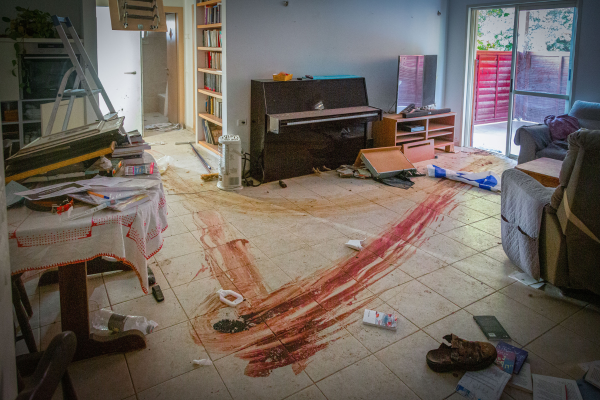Facing a potential aid cutoff to northern Gaza, Hamas proposes a ceasefire to counter Israel’s tightening military strategy.
By Baruch Yedid, TPS
Hamas’s new willingness to negotiate a ceasefire stems from its fear of a plan being considered by Israeli leaders to isolate northern Gaza from humanitarian aid and starve the terror group, and not necessarily because of the death of Yahya Sinwar in mid-October, The Press Service of Israel has learned.
Palestinian and Qatari sources told The Press Service of Israel that the terror group is scrambling to implement a comprehensive ceasefire proposal to counter the looming threat posed by the so-called “General’s Plan,” which Hamas perceives as an existential challenge to its rule in Gaza.
The plan, unveiled in April by the “Forum of Reservist Commanders and Fighters,” a group of Israeli reservist commanders and soldiers, advocates evacuating all civilians from northern Gaza, designating the area as a closed military zone, and forcing the remaining terrorists to capitulate by cutting off all aid, including food and water.
Spearheaded by Maj.-Gen. (ret.) Giora Eiland, a former head of the Israeli National Security Council, the plan has received backing from several senior military officials, though it remains unofficial in its implementation.
According to a report in the Saudi Asharq News channel, Hamas will present mediators with a comprehensive deal to immediately end the war. The agreement would see all Israeli hostages released at once in exchange for the release of an undetermined number of Palestinian detainees. Israel would also withdraw all its forces from Gaza.
Having lost control over the Philadelphi corridor and the Egyptian border, stealing humanitarian aid is a critical lifeline for Hamas. In recent weeks, Israeli forces have been attacking Hamas positions in northern Gaza — particularly Jabaliya — where the terror organization has been trying to regroup.
“The role of the IDF is to defeat the enemy and force them to release the hostages. The aim is to completely surround Hamas, cut off food and water supplies, and force the militants into making critical mistakes that will allow the IDF to systematically destroy their infrastructure,” one of Forum leaders, Col. (Res.) Hezi Nechama, told TPS-IL in September.
Hamas leaders see the General’s Plan as a direct threat to their power base, which has traditionally been centered in northern Gaza.
On the ground, the reality is already beginning to reflect some elements of the plan’s implementation. The Israel Defense Forces has called on residents of northern Gaza to leave their homes, citing military operations targeting Hamas strongholds. The IDF reports that approximately 45,000 civilians have been evacuated from the vicinity of Jabaliya alone, with hundreds of terrorists killed in the ongoing offensive. However, sources from Gaza suggest that most of the 50,000 residents who fled Jabaliya have moved westward, with only a small number heading south.
Hamas has made efforts to prevent civilians from evacuating, using the population as human shields. Destruction in Gaza City is rendering the area increasingly uninhabitable, with water shortages and long lines for essential supplies such as food becoming a daily reality.
Egyptian and Jordanian officials have voiced concerns about the potential mass displacement of Palestinians from northern Gaza, fearing a humanitarian crisis that could spill over onto their soil.
At least 1,200 people were killed, and 252 Israelis and foreigners were taken hostage in Hamas’s attacks on Israeli communities near the Gaza border on October 7. Of the 97 remaining hostages, more than 30 have been declared dead. Hamas has also been holding captive two Israeli civilians since 2014 and 2015, and the bodies of two soldiers killed in 2014.
